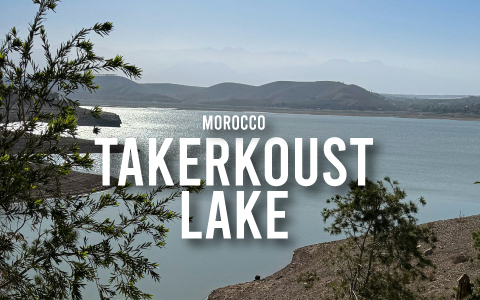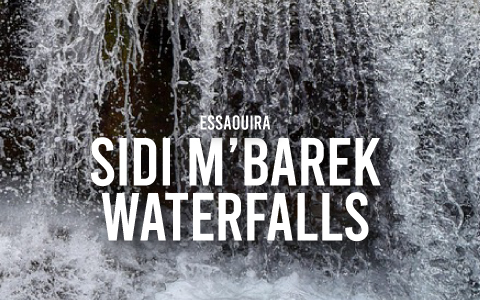
A Day Trip to Lake Takerkoust, a Peaceful Oasis Between Mountains and Desert
Morocco is a land of many faces. You can spend your days wandering through the Medina of Marrakesh and the souks of Essaouira, or you can leave the cities behind and dive into the country’s incredible natural landscapes. From the majestic High Atlas Mountains and the fertile Ourika Valley to the wild beaches of Diabat, the Argan forests, the golden dunes of the Sahara — Morocco has it all. And tucked between the rolling hills of Agafay and the foothills of the Atlas lies a hidden gem often overlooked by mainstream tourism: Lake Takerkoust.
The Fascinating History of Lake Takerkoust
Lake Takerkoust, also known as Lalla Takerkoust Dam, is not a natural lake but an artificial reservoir created in the 1920s during the French protectorate. It was built with a dual purpose: to generate hydroelectric power and to supply water for irrigation to the surrounding plains.
The name “Takerkoust” comes from the nearby town of the same name, while “Lalla” is an honorific title in Moroccan Arabic, often linked to sacred or legendary places.
When you arrive at the lake, you’re greeted by a vast expanse of water stretching between the hills, its color shifting from turquoise to olive green to deep blue depending on the light. To the southeast, the snow-capped peaks of the High Atlas seem to float above the water — especially striking in winter or spring. On the opposite side, the ochre and beige hills of the Agafay Desert create a dramatic contrast.
There are no large crowds — just the sound of water, birdsong, and a vast open sky. The area around the lake is largely undeveloped, which makes it even more peaceful. At night, the clear air reveals a star-studded sky — one of the most beautiful you can see — and all this just a short drive from the city.
What to Do and See at Lake Takerkoust
Though artificial in origin, the lake has given rise to a stunning landscape that draws visitors looking for tranquility and natural beauty, all within easy reach of Marrakesh. There’s plenty to enjoy:
1. Relax by the Lakeshore
Numerous restaurants and guesthouses with panoramic terraces overlook the lake. Here you can savor a traditional tajine, sip mint tea, or simply unwind and soak up the view. On clear days, the snowy peaks of Mount Toubkal reflect beautifully in the calm waters.
2. Water Sports
Although the lake’s size changes depending on the season and water usage for agriculture, during full-water periods you can go kayaking, ride a jet ski, try stand-up paddleboarding, or take a pedal boat for a spin.
3. Hiking and Scenic Walks
The surrounding hills are perfect for short hikes or leisurely walks. Some trails lead to elevated viewpoints with sweeping vistas of the lake, the desert, and the mountains.
4. Horse, Camel, and Quad Excursions
For a more adventurous experience, you can explore the area on horseback, by camel, or on a quad bike, venturing all the way to the first dunes of the Agafay Desert.
5. Picnics and Outdoor Living
Thanks to the pleasant climate most of the year, the lake is a perfect spot for picnics. The shores are easily accessible, and there are shady areas where you can relax and enjoy the day.
Some Practical Info for Your Visit
Lake Takerkoust is located about 40 km southwest of Marrakesh, in the province of Al Haouz. By car, the drive takes less than an hour, making it one of the easiest day trips from the Red City. The road is in good condition and offers scenic views of the distant Atlas Mountains and traditional Berber villages along the way.
Many riads and local tour agencies offer day trips that include transport, lunch, and often activities like quad biking or camel rides.
For the more adventurous, the journey can also be made by scooter, but be cautious and mindful of road safety.
Best Time to Visit Lake Takerkoust
You can visit the lake year-round, but the best times are spring (March–May) and autumn (September–November) when the temperatures are mild. Summer can be very hot, while winter, though cooler, offers breathtaking views of the snow-covered mountains.
Since it’s a man-made reservoir, water levels can fluctuate significantly based on the season and agricultural demand. In the dry summer months, the lake may partially dry out, changing the appearance of the landscape. Even then, it retains a rugged, evocative charm.



